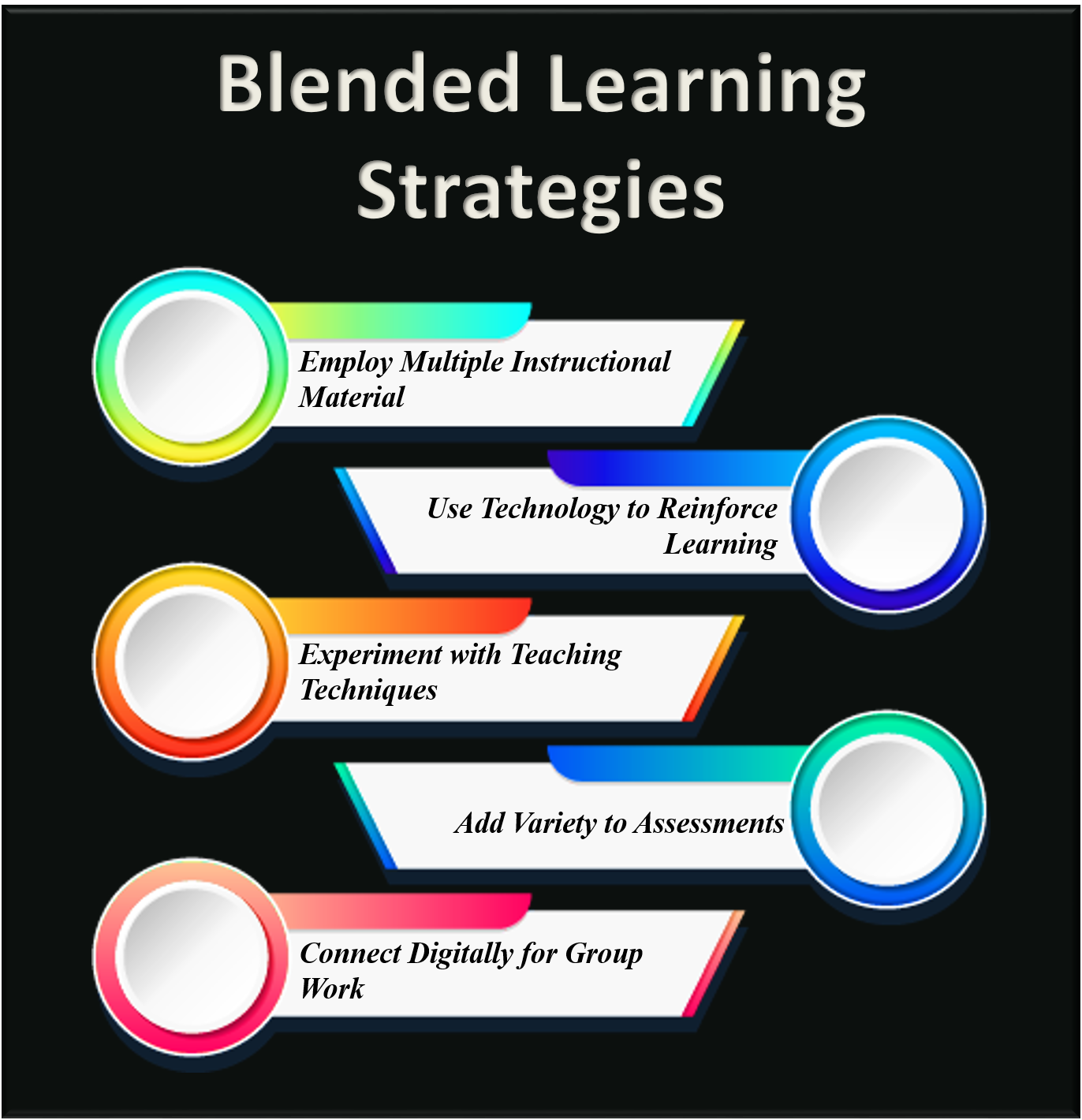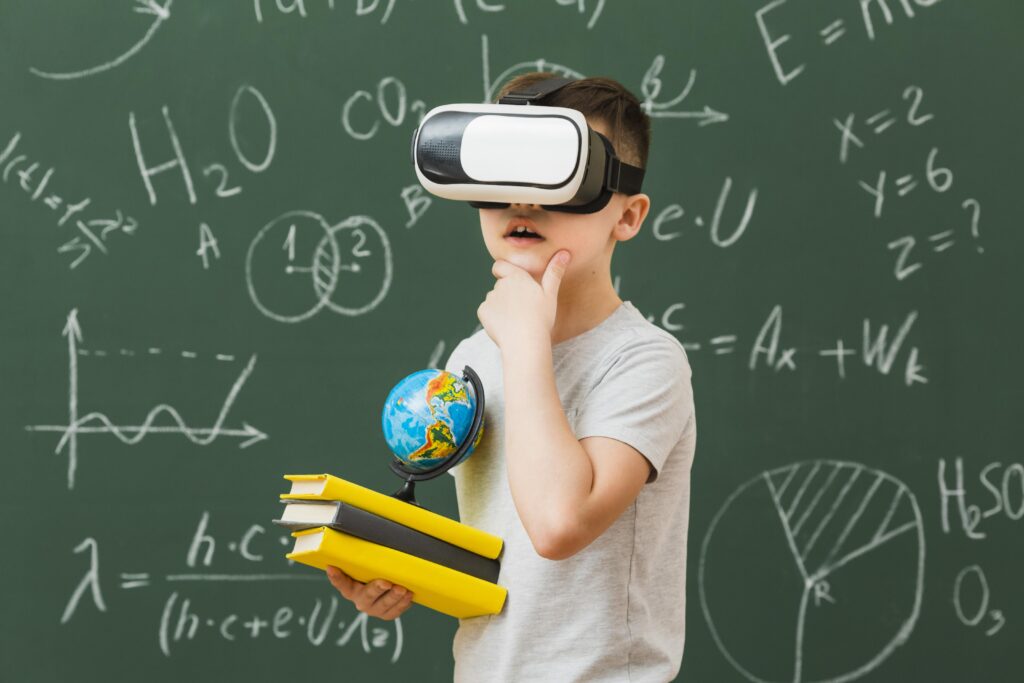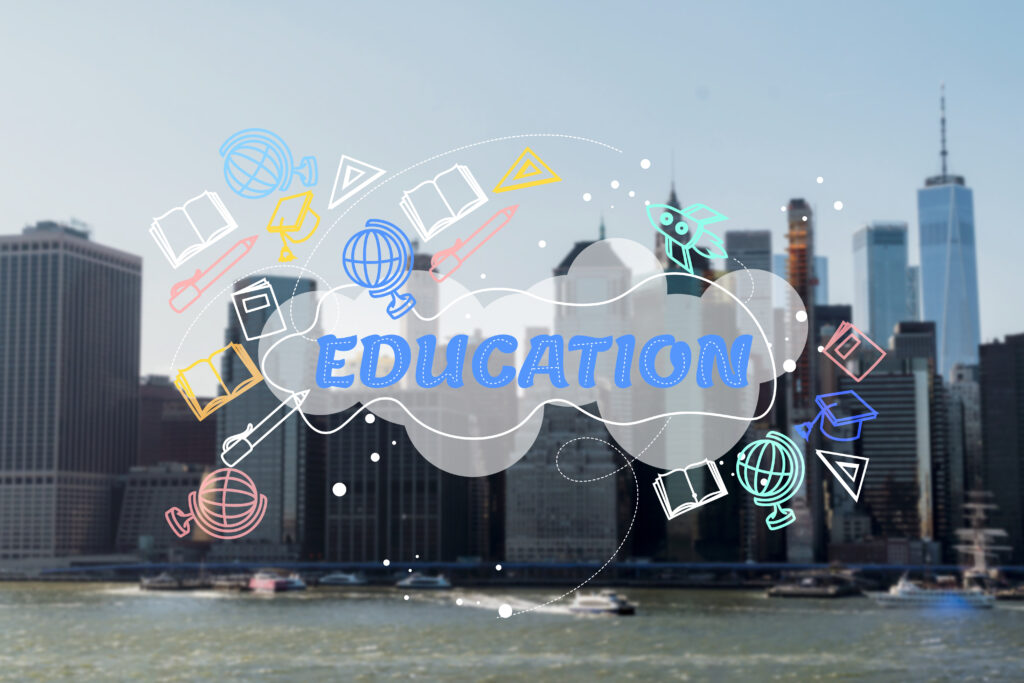Blended Learning is a form of learning where traditional and online learning are merged to impart knowledge by increasing learner engagement (refer to the previous blog for more). There are various forms of blended learning. Each type has its distinct functions and characteristics that make it compatible with different learning situations.
But like every teaching methodology, blended learning also requires certain strategies for implementation. Moreover, these blended learning strategies are responsible for the successful implementation and usability of course content. Some important strategies that can be employed while bringing blended learning into practice have been listed in this article.
Blended Learning Strategies
1. Employ Multiple Instructional Material
Instructions play a significant role in learning. Clear and effective instructions make the concepts clearer and promote longer retention. Moreover, the delivery of instructions determines the effectiveness of the teaching methodology used. Therefore, a teacher must focus on delivering the right instructions in the classroom.
In a blended learning classroom, a single form of instructional material cannot serve every purpose. Thus, teachers should use multiple instructional materials and engage students in activities like group discussion, group/individual activities, presentations, games, etc. Additionally, online resources can supplement traditional lessons to promote better retention.
2. Technology to Reinforce Learning
The Internet and evolving technology open gateways to discoveries and experiences. Augmented reality lets users experience nearly everything in real-time. Moreover, technology is also useful in education. The evolving e-learning modules incorporate all types of media so that the lessons become more interactive and engaging for the learners.
In a blended learning classroom, e-learning and the traditional lecturing method of teaching go hand-in-hand. Hence, teachers are free to use online resources, including social media to engage learners and to maximize the learning outcomes. Mobile applications, games, social media groups, videos, and other digital teaching-learning tools serve as tools for the reinforcement of learning.
3. Experiment with Teaching Techniques
A teacher not only teaches but also acts as a facilitator in the classroom. A good teaching methodology caters to the learning needs of the learners and produces good learning outcomes. Additionally, the aims and objectives of the course and the level of understanding of the learners also contribute to the successful execution of the teaching-learning process. Thus, teachers must be careful while opting for a specific method of teaching.
Moreover, in a blended learning classroom, technology-based learning works in concert with traditional learning. This allows teachers to experiment with varied teaching methodologies. Thus, a teacher must explore the gamut of possibilities and experiment with different teaching techniques to see what works best for the learners.
The Flipped Classroom method can serve as a good teaching technique as it allows more discussions and project work in a class.
4. Old is Gold
The adage, Old is Gold, is befitting for the teaching-learning methods as well. Although the use of new methodologies is important, the traditional teaching method holds a significant position in the process.
A blended learning classroom is the assimilation of traditional teaching and eLearning. It allows learners to not only learn but also experience learning at the same time with the help of technology. Moreover, it is an undeniable fact that discussions are an irreplaceable part of a classroom. They allow learners to explore the depths of a topic and initiate better learning. Therefore, the use of eLearning to supplement traditional learning works in favor of the teachers as well as learners.
5. Add Variety to Assessments
Assessments are not only for recording scores; they also help track learners’ progress in various aspects of learning. Assessments require learners to recapitulate through the lesson before they exhibit their learning in a test. Additionally, the learners retain more as they go through the lessons repeatedly to prepare for an assessment test.
However, a single form of assessment test is not enough to measure the overall learning progress. As a result, assessment tests must contain a variety of question types. They can include digital quizzes, essays, peer-assessed assignments, presentations, and others, along with traditional pen and paper tests.
6. Digital Connection for Group Work
In the contemporary age with the growing use of the Internet, social media has a great influence on us. People around the world spend hours on social media applications. These applications fulfill the human need to connect by allowing us to communicate across borders.
A blended learning classroom takes advantage of technology along with the traditional teaching method to impart knowledge. Thus, it engages learners even outside the classroom. Teachers can hold discussions over a topic or give group assignments to be done through discussion in a social media group. In addition to learning, such activities develop the communication skills of the learners. Moreover, it helps develop online collaboration habits required for effective communication as the learners start looking for jobs.
Case Study
Blended Learning is already a practiced methodology in many educational institutions. The University of Waterloo presents a good example of this. The University provides many courses that employ blended learning. The courses require that learners prepare the concepts through online modules before learning them in a traditional classroom setting. For instance, the course OPTOM 245L (Diseases of the Eye 1 Laboratory) uses online presentations to teach lab procedures to the learners without performing them in an actual lab.
Similarly, the course PHARM 224 (Pharmokinetic Fundamentals) makes the students work independently on foundational concepts of the course and with an instructor in a group tutorial for problem-solving. Thus, the class time is reduced and the learners explore learning through online activities and presentations.
In a world where technology, information, and communication work effectively in a mesh, isolating education from advancing technology is the most disregardful idea. Blended learning is the only means to pace education with the changing environment for nurturing the minds of tomorrow. The application of Blended Learning strategies widens the scope of education, broadens the perspective of acquiring education, and produces a resourceful work population for the future. The advancement in the implementation of these strategies is deemed to shape the future of education and, in this way, the workforce.
Read our next blog in the Blended Learning series for some Tips to Set-Up a Blended Learning Classroom.
Reference: Applied Education Systems
Images Shutterstock and Freepik
For more such content on teaching methodologies, visit our blog.
Create. Engage. Inspire.
















